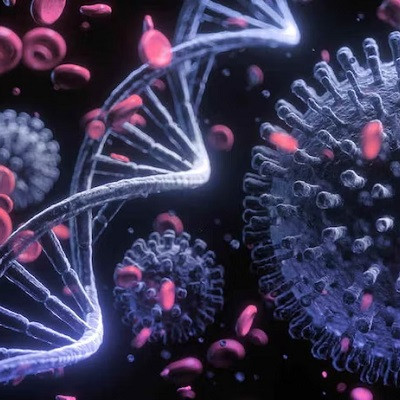
2022-12-21
Visited : 1737
Nanotechnology company IdentifySensors Biologics recently announced that it has completed preliminary clinical tests to validate a COVID-19 detection method that it believes can be four times more sensitive than polymerase chain reaction (PCR).
The platform uses saliva samples and digital graphene sensors to rapidly and accurately detect the SARS-CoV-2 virus and in preliminary testing, demonstrated a limit of detection of 200 copies per milliliter, the firm said.
The test results are displayed digitally and uploaded to the cloud. If the test can be commercialized, it would enable an individual to test at home and doctors to view results remotely.
Founded in late 2020, Cleveland-based IdentifySensors Biologics has been developing the sensor technology platform, called Check4, with Purdue University, Dr. Greg Hummer, cofounder and CEO of IdentifySensors, said in an interview.
Although the testing platform currently uses saliva as a sample, the firm also intends to develop tests that use blood and other bodily fluids, Hummer said.
The company aimed initially to develop biosensors to detect food-borne pathogens, such as Escherichia coli, that can cause conditions such as salmonella and shigella. However, with the onset of the COVID-19 pandemic, “we saw there was a need for a rapid, digital, electronic molecular test, [and] we pivoted towards using the same sensor to detect pathogens in humans and animals,” Hummer told LabPulse.
The test detects a segment of the genome specific to certain pathogens, viruses, or bacteria. Unlike PCR, it does not require reagents, enzymes, or amplification.
In the preliminary validation studies, the sensors were fabricated and tested in batches of 20 using heat-inactivated saliva samples as required by U.S. Food and Drug Administration (FDA) Emergency Use Authorization (EUA) standards, the firm said.
The saliva samples were collected from COVID-positive patients, and viral concentrations of the samples were quantified using RT-PCR.
The samples were then diluted to the preliminary limit of detection of 200 copies per milliliter and retested using Check4. Approximately 98% of the tests showed accurate rapid results from verified samples, the firm said.
The Check4 platform consists of a Bluetooth reader and a disposable test cartridge that attaches to the reader. “Right now, the cartridge can have up to four different sensors, which means we can detect four different pathogens at the same time or separately,” Hummer said.
The graphene “is functionalized with the corollary or complimentary DNA or RNA strand that we’re looking [to detect],” Hummer said, adding that the platform has detected all the SARS-CoV-2 variants of concern in clinical samples.
Furthermore, the platform’s low limit of detection enables it to detect individuals with SARS-CoV-2 who are either symptomatic or asymptomatic, Hummer added.
The company is preparing an application for review of its COVID-19 test by the FDA in 2023. It will seek an EUA and a de novo classification, Hummer said.
The company anticipates that it will begin manufacturing in mid- to late 2023. To produce the tests, Jabil, an electronics manufacturing services company, will partner with IdentifySensors.
Hummer said that the technology should enable the rapid development of additional tests to detect other diseases and bacteria.
Tests other than those that detect SARS-CoV-2 are in the pipeline. For example, IdentifySensors intends to develop a respiratory panel that detects respiratory syncytial virus (RSV), influenza A, influenza B, and COVID-19, Hummer said.
Additional tests are in development for Lyme disease, HIV, hepatitis A/B/C, Zika, dengue fever, sepsis, yellow fever, West Nile virus, and methicillin-resistant Staphylococcus aureus (MRSA).
“Once we get the graphene functionalized, it’s just a matter of putting a different segment of DNA or RNA on the surface of the graphene,” he said.
Read the original article on LabPulse.